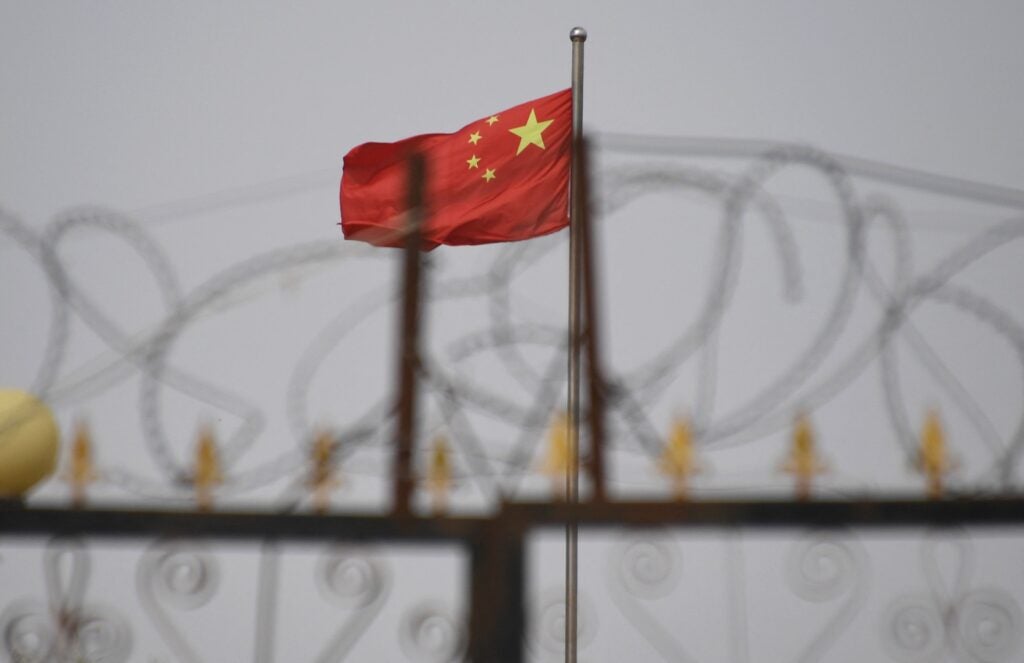DAILY CALLER NEWS FOUNDATION—The New York Times ran a column Monday applauding China’s green energy transition without mentioning that slave labor has played a massive role in the country’s progress on that front.
The column—written by David Wallace-Wells under the headline “What Happens if China Stops Trying to Save the World?”—gives China great credit for scaling up green energy manufacturing and installation while asserting that the American transition to less carbon-intensive energy is lagging by comparison.
However, Wallace-Wells failed to mention in his piece that China’s green industry is powered with slave labor from Uyghur Muslims and other persecuted minorities.
“Consider solar power, which is presently dominating the global green transition and giving the world its feel-good story. In 2023, the world including China installed 425 gigawatts of new solar power; the world without China installed only 162 gigawatts,” Wallace-Wells writes. “China accounted for 263 gigawatts; the United States accounted for just 33. As recently as 2019, China was installing about one-quarter of global solar capacity additions; last year, it managed 62 percent more than the rest of the world combined. Over those same five years, China grew its amount of new added capacity more than eight times over; the world without China didn’t even double its rate.”
The Chinese solar industry, which dominates the global solar market, has been accused by the U.S. government and third-party analysts of taking advantage of slave labor. The State Department also published a July 2022 report that strongly suggests Chinese solar manufacturers are taking advantage of forced labor, and the Department of Labor put out its own 2022 report concluding that various solar products manufactured in China are produced with child or forced labor inputs.
The New York Times also published its own report on the Chinese green energy industry’s connections to slave labor in January 2021, suggesting that several major Chinese solar companies appear to be connected to the practice. One October 2023 assessment from The Heritage Foundation found that approximately 80% of all solar components made in China are produced using slave labor, and American customs officials have blocked solar shipments coming in from China for potential violations of the Uyghur Forced Labor Prevention Act, according to Reuters.
“There is progress being made around the world, but the gap between China and everybody else is much larger and more intimidating than is widely acknowledged, and the global story looks much less optimistic once you set China aside—which is, in some ways, precisely what America is trying to do by engaging in a green-tech trade war,” Wallace-Wells states in his column.
Using regulation and hundreds of billions of taxpayer dollars, the Biden-Harris administration has made a huge effort to stand up a domestic green energy industry and reduce America’s reliance on fossil fuels, but cheaper Chinese products and dominance of green energy supply chains has complicated those goals.
In addition to problems with slave labor’s role in green supply chains, American companies have also voiced concern that China’s price advantages and unfair trade practices threaten to wipe them out in the absence of protections just as they are starting to find their footing.
Chinese solar products are low-cost because of a combination of cheap coal to power manufacturing, extensive government subsidies, and forced labor, according to Forbes and The Heritage Foundation’s October 2023 analysis.
In his column, Wallace-Wells concedes that China is the world’s top emitter of carbon dioxide, but he points to China’s “avoided emissions” as evidence that the country is displacing coal power for low-emissions renewables. Notably, China permitted two coal plants per week on average in 2022, according to research conducted by the Centre for Research on Energy and Clean Air.
“Much of the argument for those tariffs has concerned the challenge of Chinese subsidy and ‘overcapacity’—and what the United States and its allies might do, if anything, to enable us to properly compete with a green economy producing today twice as many solar panels as the world has demand for, as well as an [electric vehicle] company taking over the world while mostly posting losses,” Wallace-Wells continues. “But another aspect of the imbalance is perhaps more worrying, at least for those of us concerned about the pace of decarbonization: that China might back off, reducing its support for green industry in much the way that it purposefully deflated its own real estate bubble, somewhat idling the engine of the global green transition and leaving the rest of us in the lurch.”
The New York Times did not respond immediately to a request for comment.
Originally published by the Daily Caller News Foundation
